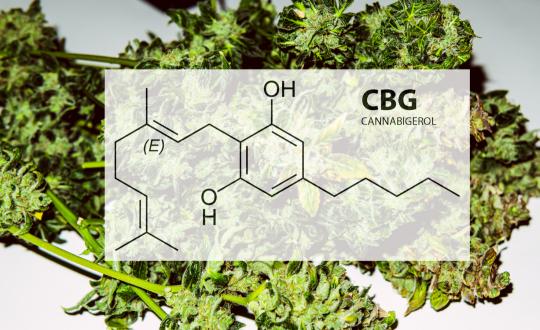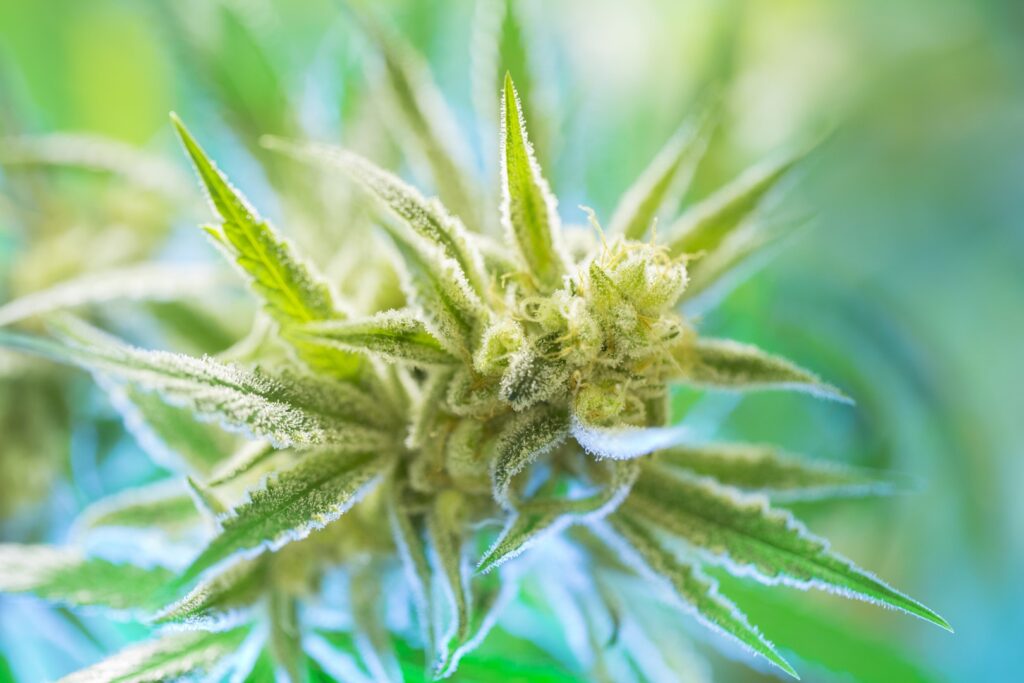
Science is beginning to unveil the potential of many hitherto untapped cannabinoids. CBG is one of them. How does this new substance compare to CBD?
The cannabis plant produces a wide range of molecules, among which we find over 100 cannabinoids. Limited clinical research and animal studies have shown the potential of THC and CBD. Researchers continue to study major cannabinoids today, but interest is also developing around other compounds, such as cannabigerol (CBG). Scientists have uncovered a number of promising features, sparking interest from both researchers and companies in the industry.
WHAT IS CBG?
Israeli biochemist and cannabinoid "godfather" Raphael Mechoulam first isolated CBG, along with THC, in 1964. Shortly thereafter, research published in the journal Psychopharmacologia did not evaluate any behavioral changes in rhesus macaque monkeys. administered this molecule. CBG was therefore found to be non-psychoactive. Cannabigerol is classified as a minor cannabinoid which occurs in low concentrations both in native varieties and in genetic selections of cannabis. Breeders have developed chemotypes with 100% CBG profiles by eliminating certain enzymes, and these strains are set to attract significant attention as scientific research on CBG progresses.
THE MOTHER MOLECULE
Researchers have labeled CBG a "parent" or "stem cell" cannabinoid as it is the central chemical precursor to many other cannabinoids. Specific enzymes convert CBG into its corresponding molecules, in a process known as cannabinoid biosynthesis. All cannabinoids initially exist in the plant in the form of cannabinoid acids. High temperatures trigger a reaction known as decarboxylation, which removes a carboxyl group from each molecule. This reaction, for example, turns THCA into THC and CBDA into CBD. According to this logic, CBG exists as CBGA in the live plant.
The CBGA synthase enzyme converts some organic compounds to CBGA. Subsequently, with various chemical reactions, other enzymes break down the parent molecule into the main cannabinoids. THCA synthase, CBDA synthase and CBCA synthase use CBGA as a substrate to produce the respective cannabinoid acids. Non-enzymatic processes then create more than 60 other cannabinoids from CBGA.

CBG MECHANISM
In addition to its key role in cannabinoid biosynthesis, CBG has been scientifically explored for its potential benefits. The molecule exerts multiple mechanisms of action, partially activating the CB1 and CB2 receptors of the endocannabinoid system and stimulating the vanilloid-1 receptor.
So let's explore what science has to say about CBG. How do these mechanisms affect the body? And what is the quality of the existing data?
CBD AND CBG: SIMILARITY AND DIFFERENCES
CBD and CBG have similarities and differences, but attempting to compare them at this stage is rather pointless. Much more high-quality research has been poured into CBD. There may be similarities and differences that we are simply not aware of yet, but let's take a look at what we do know.
BOTH CBD AND CBG HAVE NO INEBRIANT EFFECTS
CBD and CBG have a low binding affinity for the CB1 receptor, while THC achieves its psychotropic effects by stimulating this site in the central nervous system. CBG acts as a partial agonist of this receptor, stimulating it to a level that does not trigger psychotropic effects. However, both CBD and CBG also act as CB1 receptor antagonists, temporarily inhibiting the uptake of the endocannabinoid anandamide.
The non-psychotropic nature of CBG and CBD makes them attractive candidates for clinical study, as many view the psychotropic action of THC as an undesirable effect.
CBG CAN IMPROVE APPETITE
Cannabis is known to increase appetite. This mechanism, also defined as "munchies", induces a state of intense hunger and desire for food. THC has long been associated with this phenomenon, but a 2016 study published in the journal Psychopharmacology states that THC-free cannabis extracts remain capable of inducing hunger.
The authors explain that CBG could be the cause of the improved appetite. In rats, CBG more than doubled total food intake and increased the number of meals. Conversely, CBD was shown to reduce hunger during one study.
A USELESS COMPARISON? It is useful to compare cannabinoids to explore the possible applications of each, but the research is still too limited to draw concrete conclusions. High-quality future research will be the only way to accurately compare the properties of these fascinating molecules.
Potential Benefits of CBG:
Like CBD, CBG has been used to combat pain without having the intoxicating effect of cannabinoids like THC.
Research shows that CBG can also have therapeutic effects.
However, human studies on this are sparse and more research needs to be done in this area. Some promising animal studies show that CBG might ultimately be found useful for the following therapeutic benefits listed below.
–Inflammatory Bowel Disease (IBD)
Inflammatory bowel disease is a condition that causes chronic inflammation in the bowel. It affects millions of people across the globe and is incurable.
An experimental animal study conducted in 2013 observed the beneficial effects of CBG on inflammatory bowel disease.
Researchers induced inflammations similar to IBD in the colons of mice and then administered CBG. CBG was found to reduce the inflammation and the production of nitric oxide. It also reduced the formation of reactive oxygen species (ROS) in the intestines. They concluded that CBG should be considered for clinical experimentation in IBD patients.

–Glaucoma
In an animal study, researchers found that CBG has therapeutic potential for the treatment of glaucoma.
Reseachers administered CBG to cats with glaucoma and noticed a reduction in eye pressure and an increase in aqueous humor outflow, a fluid produced by the eye which maintains eye pressure and provides the eye with nutrition.
–Antibacterial Properties
A 2020 study on the antibiotic potential of cannabis, found that CBG has antibacterial properties. Especially against methicillin-resistant strains of Staphylococcus aureus (MRSA), a bacteria which causes staph infections and is drug-resistant.

–Huntington's disease
Huntington's disease is a condition that causes a breakdown of nerve cells in the brain. In a 2015 study, researchers examined the potential neuroprotective properties of CBG and other cannabinoids in mice who had an experimental model of Huntington’s disease.
It was observed that CBG acted as a neuroprotectant, protecting the nerve cells in your brain from damage. It also improves motor deficits and preserves striatal neurons against 3-nitropropionic acid toxicity.
–Fighting Cancer Cells
2014. aasta uuringus jälgisid teadlased CBG mõju käärsoolevähiga rottidele. Nad täheldasid, et CBG näitas mõningast vähirakkude kasvu põhjustavate retseptorite blokeerimist ja kolorektaalsete vähirakkude kasvu pärssimist.Teadlased soovitasid, et käärsoolevähi ravimisel ja ennetamisel tuleks CBG kasutamist kaaluda translatiivselt.
HIGH CBG STRAINS
The cannabis community hasn't paid much attention to CBG and we can't even criticize it as the research is still superficial and incomplete. Breeders will likely focus on this cannabinoid as further studies confirm its properties. Genetic selection for high levels of CBG is likely, but some strains already have relatively high levels of this cannabinoid today.
FORCE DUTCH PASSION is an high CBG variety. The dense flowers of this indica-dominant specimen produce <0,2% THC, 0.2% CBD and 21% CBG. The effect is deeply relaxing.
